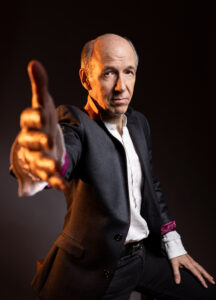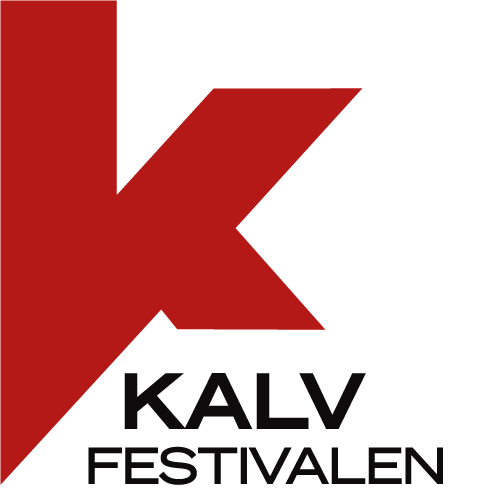 Mark Tatlow is a conductor, pianist and harpsichordist. Born in Wolverhampton, England, he has lived in Sweden for over 25 years. While Artistic Director of the Drottningholm Palace Theatre from 2007 to 2013, he conducted Sweden’s first Monteverdi opera cycle, as well as works by Cavalli, Handel, Martín y Soler, Haydn, and Mozart. From 2002–2012 he served as Professor of Musical Studies at the University College of Opera (now SKH), Stockholm, and in 2013 co-founded Performing Premodernity, a research project based at Stockholm University.
Mark Tatlow is a conductor, pianist and harpsichordist. Born in Wolverhampton, England, he has lived in Sweden for over 25 years. While Artistic Director of the Drottningholm Palace Theatre from 2007 to 2013, he conducted Sweden’s first Monteverdi opera cycle, as well as works by Cavalli, Handel, Martín y Soler, Haydn, and Mozart. From 2002–2012 he served as Professor of Musical Studies at the University College of Opera (now SKH), Stockholm, and in 2013 co-founded Performing Premodernity, a research project based at Stockholm University.
He is currently undertaking artistic research at the University of Gothenburg. His dissertation, “Assaggio. Experimenting with the performance of early vocal music at a time of meta-crisis” looks at ways the catastrophic future facing the world could impinge on his approach to early music.
In 2019 Mark was commissioned by the Buxton Festival to compile and conduct Georgiana, a new eighteenth-century opera pasticcio, which received the UK Theatre Award for Achievement in Opera. In 2022 he was awarded the Gustavian Scholarship from the Swedish Academy. Mark has been artistically responsible for several new concert halls, including the Wathen Hall at St Paul’s School in London and the Queen Silvia Concert Hall at Lilla Akademien in Stockholm.
ABOUT THE WANDERING SOUNDS OF KALV
THE SEVEN WORDS AND THE SEVEN HAYDN
In my artistic research at HSM I am grappling with the question of how what is often termed “old” music can tell “new” stories. An example of this conundrum is Haydn’s Seven Last Words on the Cross. It was written in 1786 for the Oratorio de la Santa Cueva in Cádiz, where, in 1755, there had been a terrible earthquake and tsunami thirty years earlier. Haydn later wrote the following account of the commission and the peculiar circumstances of the first performance:
“Some fifteen years ago I was requested by a canon of Cádiz to compose instrumental music on the Seven Last Words of Our Saviour On the Cross. It was customary at the Cathedral of Cádiz to produce an oratorio every year during Lent, the effect of the performance being not a little enhanced by the following circumstances. The walls, windows, and pillars of the church were hung with black cloth, and only one large lamp hanging from the center of the roof broke the solemn darkness. At midday, the doors were closed and the ceremony began. After a short service the bishop ascended the pulpit, pronounced the first of the seven words (or sentences) and delivered a discourse thereon. This ended, he left the pulpit and fell to his knees before the altar. The interval was filled by music. The bishop then in like manner pronounced the second word, then the third, and so on, the orchestra following on the conclusion of each discourse. My composition was subject to these conditions, and it was no easy task to compose seven adagios lasting ten minutes each, and to succeed one another without fatiguing the listeners; indeed, I found it quite impossible to confine myself to the appointed limits.”
The music is wildly expressive, and beautifully crafted. It has even been compared to late Beethoven in its musical intensity. But, at the same time, its lofty sensibilities have been considered too abstract for a modern audience, and it has been termed “part of the dead culture of eighteenth-century sentimentality”. How can this music to relate to today’s world of crises?
Each of the meditative sonatas is based on one of the seven last words attributed to Christ on the cross. Haydn prefaced the sonatas with a dramatic introduction, and added a final movement representing the cosmic earthquake that took place when Christ died. Many listeners will have been reiminded of the earthquake that took place in Cádiz. This physical link between the original story and the recent history of Cádiz made me ask the question: might there be a way of linking Christ’s death with prophecies that predict the forthcoming death of our planet. After all, the Bible hints that God reveals himself not only in Christ but in the created world.
Could we superimpose Christ’s via dolorosa upon our pilgrim path here in Kalv, walking on earth that is soon to be enveloped in a new crisis? Could we see the crisis as a turning point, that ushers in a time a creativity? As we remember the past, we walk in the present, and we look to the future. Carrying the cross of creation: on the earth’s final journey.
As well as seven last words, there are seven pilgrim virtues and seven elements, and so I decided to place each of the musical meditations within a framework of three words. I will try and respond to these words in my performances of the Haydn sonatas; festival musicians will respond to the sonatas through improvising over the sets of three words; the audience will then reflect on the experience of listening to the music. Together we will become the wandering sounds of Kalv.
The introductory movement will be played at a separate initial event, which will set the scene for the series of meditations. I hope it will give rise to questions about pilgrimage, and what it might mean to carry the cross of creation. The earthquake will follow on immediately from the seventh meditation at the final concert.
As we listen and wander together, I look forward to hearing the responses of others in music and conversation.
Needless to say, I am enormously grateful to the Kalv Festival for enabling me to present Haydn’s Seven Last Words in this way.


